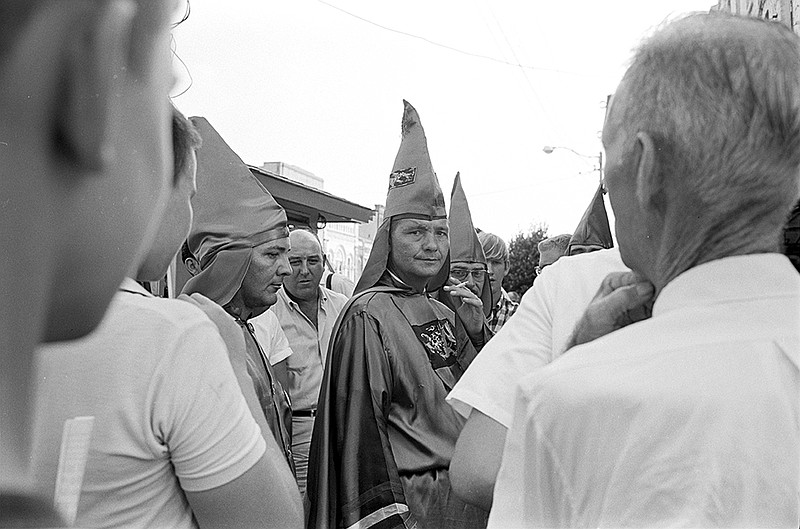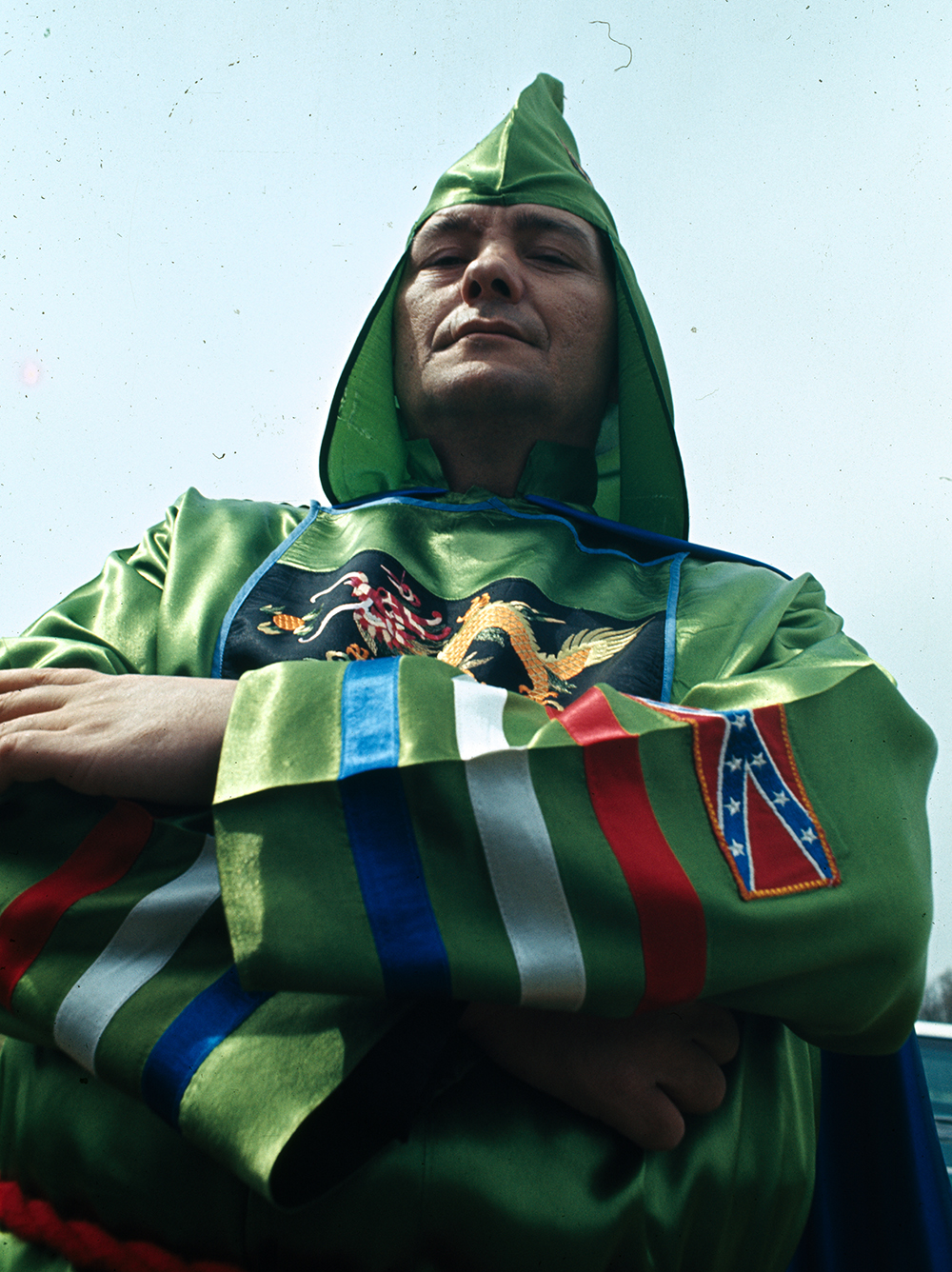As a child growing up on Signal Mountain, Callie Wiser recalls hearing rumors that there were still members of the Ku Klux Klan living in the area.
"I remember hearing that there was some Grand Wizard or something," the Boston-based filmmaker says while home visiting relatives for the holidays.
Those memories - the idea that this horrible thing that seemed so far in the past but was, in fact, just around the corner - were part of the reason behind her latest project, "American Experience: Klansville U.S.A."
"When I started this project, I mentioned those rumors to my mother and she said, 'Oh yeah, that was Byron De La Beckwith.' That shocked me. That it was so close. Of course, people just didn't talk about it."
In 1994, at the age of 74, Beckwith, who was living on Signal Mountain at the time of his arrest and eventual trial in Mississippi, was convicted of assassinating civil rights leader Medgar Evers in 1963 in Mississippi. His two previous trials in 1964 had resulted in hung juries. He died in a Jackson, Miss., hospital in 2001 after being transferred there from prison.
Wiser wrote, directed and produced the hour-long documentary, which will air this month on PBS (WTCI-TV 45 locally). Her previous works include "The Amish" and "The Amish Shunned," also "American Experience" projects.
The new documentary looks at the rebirth of the KKK in North Carolina under the leadership of Bob Jones, who in three years in the mid-'60s created the largest Klan organization in the country with more than 10,000 members and got the state dubbed "Klansville U.S.A."
While the Klan often brings up images of violence and hatred, especially in places like Alabama and Mississippi, the fact that the KKK was so pervasive in North Carolina, which was thought to be fairly progressive, is another reason Wiser wanted to tell this particular story.
In the minds of many around the country in the '60s, North Carolina - thanks in no small part to the popularity of "The Andy Griffith Show" - was thought to be a place where people got along, like the folks in Mayberry did on the show. So the country was shocked when CBS News ran a story with footage of a Jones-led rally in which he introduced and lauded the three men accused of killing civil rights worker Viola Liuzzo in Selma, Ala., in 1965. It was a turning point for country's perception of the KKK and placed it in the crosshairs of the FBI and its head, J. Edgar Hoover.
When the country saw footage of the rally and Jones appearing to condone murder, "the Carolina Klan was painted in a very different light," author David Cunningham says in Wiser's film.
The documentary also looks at just who was joining the Klan in North Carolina - husbands and wives, ministers, civic leaders, church-goers.
When to watch
"American Experience: Klansville U.S.A." will air on WTCI-TV Channel 45 at 9 p.m. on Jan. 13.
"I guess to me that is also part of why I was so interested in this because it's hard to be too far removed from it [the Klan] because it was so pervasive," Wiser says. "People think of them [Klan members] as evil monsters, which is what they said about the Nazis, but actually these were ordinary citizens and to me that is even scarier. People who feel so desperate."
Many of the people she contacted for the documentary were reluctant to share their stories on the record or be filmed, she says.
"The stories we heard most were from the women who were in the women's auxiliary. One woman told me, 'The truth of the matter is what we did then doesn't feel any different than what my church group does now. We didn't feel like we were doing anything wrong. We take gift baskets for people in the hospital. Things like that.'"
As the Civil Rights Movement picked up steam around the country, Jones advocated against violence in his organization and stated publicly that he was not a racist; he just didn't want races or religions to mingle.
He also proclaimed that white, Protestant Americans were the only group that didn't have an organization fighting for its rights, and his stated goal was to create such a group with enough power and clout to elect politicians sympathetic to its beliefs. Jones was able to convince white North Carolinians that their way of life was being threatened and that only the KKK was fighting for them.
It was that story, not the violent things that other Klan groups - known as Klaverns - were doing around the country, that Wiser wanted to tell.
"We wanted to tell a story that people hadn't heard before," she says. "The expected story would be about the violence in places like Alabama, but North Carolina offered an opportunity to show that it was very convenient for people in North Carolina - and even Tennessee - to say, 'Oh, we're not racist because we're not like Mississippi.'
"But if Mississippi is the standard of what racism is, then a lot of people can say they are not racist. If that's true, then even people in Boston, where I live, can say 'Well, we don't have a race problem because we're not the South,' which is completely not true. But if you define racism in very narrow terms as violence against blacks, then maybe it is true."
She says Jones and the people who joined his organization were able to convince themselves that they were "not evil monsters, but the ones being persecuted."
"I think that if we allow people, and these people have always been allowed to feel as if everyone is against them, and even today they still say, 'No one understands us,' it gives people power to feel like they are being persecuted."
In addition to being somewhat surprised to discover that the North Carolina Klavern was the country's largest, Wiser says she was also interested to learn that the two previous waves of the KKK, which was formed in Pulaski, Tenn., in 1865, were considered successes.
The KKK violence after the Civil War in the 1860s helped bring forth the era of Jim Crow, which established racial segregation laws "where people feared the lack of racial order," she says.
The second wave in 1920s "set up the Immigration Act of 1924, which assured that white Europeans would be the majority of immigrants to the United States."
The final "discovery" for Wiser was how the North Carolina KKK Klavern was eventually dismantled. When Jones was brought before the House Un-American Activities Committee, he pleaded the Fifth Amendment and refused to offer any information on the Klan, especially its financial dealings.
That did not sit well with his constituents back home, who vividly remembered those accused of being Communists doing the same during HUAC hearings in the 1950s. It gave the appearance that Jones, and therefore the Klan, was not nearly as "American" as the Carolina Klansmen like to think of themselves.
"Before," Wiser says, "HUAC had said they couldn't look at them because the Klan was an American institution," Wise says. "This was the first time they had gone after a right-wing group. It brought to light their activities and placed an 'un-American' tag on them."
Contact Barry Courter at bcourter@timesfreepress.com or 423-757-6354.


